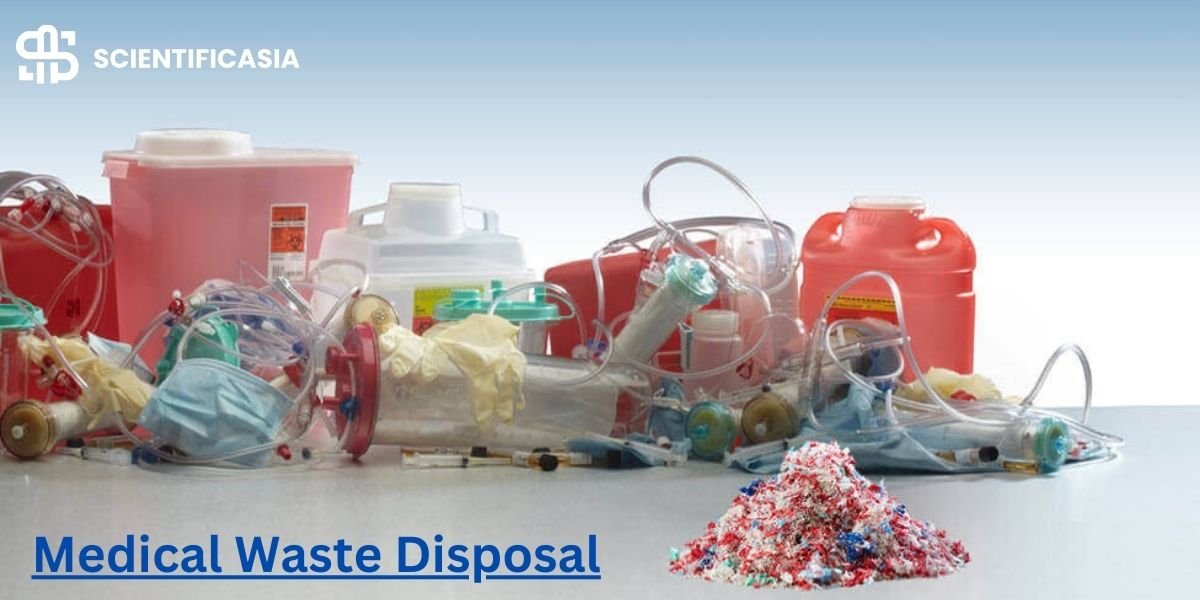The disposal of medical waste is a critical aspect of healthcare operations, ensuring the safety of patients, staff, and the environment. However, improper medical waste disposal can have severe environmental consequences. As healthcare systems worldwide generate increasing amounts of waste, including hazardous materials, addressing the environmental challenges associated with medical waste becomes more urgent. This issue is particularly relevant when considering medical waste disposal, where strict regulations aim to mitigate environmental harm but challenges remain. In some cases, services like Accident Cleaning play an important role in managing biohazardous waste after traumatic incidents, ensuring compliance and environmental safety.
In this article, we’ll explore the environmental impact of improper medical waste disposal, its causes, and how adopting better practices can protect ecosystems and public health.
What is medical waste?
Medical waste includes all waste materials generated in healthcare facilities such as hospitals, clinics, laboratories, and nursing homes. It can be broadly categorized into:
- Infectious Waste: Items contaminated with blood, bodily fluids, or infectious agents.
- Hazardous Waste: Chemicals, solvents, or pharmaceuticals that are toxic or harmful.
- Radioactive Waste: Materials exposed to radioactive isotopes used in treatments and diagnostics.
- General Waste: Non-hazardous waste, similar to household garbage.
Improper handling and disposal of these waste types, especially hazardous and infectious waste, can result in significant environmental damage.
The Environmental Consequences of Improper Disposal
1. Soil Contamination
Improper disposal of medical waste, such as dumping untreated waste in landfills or open areas, can lead to soil contamination. Hazardous chemicals, pharmaceuticals, and pathogens from medical waste seep into the soil, altering its composition and harming microorganisms essential for soil health. Contaminated soil can further impact agriculture, water quality, and biodiversity.
2. Water pollution
Improper disposal of medical waste often leads to its end in waterways, either directly or through leaching from landfills. This can introduce harmful substances such as heavy metals, antibiotics, and pathogens into water systems. Contaminated water poses serious risks to aquatic life and can disrupt ecosystems. In addition, polluted water may find its way into drinking water sources, posing health risks to humans.
3. Air pollution
The incineration of medical waste without proper filtration systems releases harmful pollutants into the air, including dioxins, furans, and mercury. Researchers have linked these substances to respiratory problems, cancer, and other health issues, contributing to air pollution. Open burning of medical waste, a practice still observed in some regions, exacerbates the problem by releasing toxic fumes.
4. Threat to Wildlife
Improperly discarded medical waste, such as sharps, plastics, and pharmaceutical residues, can harm wildlife. Animals that come into contact with contaminated waste may suffer injuries, infections, or poisoning. For instance, marine life often ingests plastic waste, mistaking it for food, leading to starvation and death.
5. Contribution to Climate Change
Improper medical waste disposal contributes to greenhouse gas emissions, particularly through incineration and the decomposition of organic waste in landfills. Organic waste decomposes anaerobically in landfills, releasing methane, a potent greenhouse gas. This exacerbates global warming and climate change.
Causes of Improper Medical Waste Disposal
1. Lack of Awareness
Many healthcare facilities and waste handlers lack adequate knowledge about proper disposal methods and their environmental implications.
2. Inadequate infrastructure
Some regions, especially rural or remote areas, may lack the infrastructure for safe medical waste disposal. This is an area of concern even for developed countries like Canada, where rural healthcare facilities may face logistical challenges.
3. Cost Constraints
Proper medical waste disposal can be costly. Some facilities may resort to cheaper but environmentally harmful methods, such as open dumping or incineration without filtration systems.
4. Ineffective regulation and enforcement.
While countries like Canada have robust regulations for medical waste disposal, enforcement gaps can lead to improper practices.
Addressing the Issue: Solutions for Sustainable Medical Waste Management
1. Strengthening Regulations
Governments must ensure stringent enforcement of medical waste disposal laws. In Canada, federal and provincial regulations govern medical waste disposal in Canada, emphasizing segregation, treatment, and safe disposal. Expanding these regulations to cover all healthcare facilities, including small clinics and home care services, can reduce environmental risks.
2. Investing in infrastructure.
Building modern waste treatment facilities, such as autoclaves, chemical disinfection units, and advanced incinerators with emission controls, can help manage medical waste sustainably. Investments should also include solutions for remote or rural areas where facilities are often inadequate.
3. Promoting sustainable practices.
Healthcare facilities should implement sustainable practices.
- The process of segregating waste at the source guarantees the appropriate treatment of hazardous materials.
- We are reducing the use of single-use plastics in medical supplies.
- Recycling non-hazardous materials whenever possible.
4. Educating Healthcare Professionals
Training healthcare staff on proper waste management techniques is crucial. Awareness campaigns can ensure that everyone, from doctors to janitorial staff, understands their role in minimizing environmental harm.
5. Encouraging technological innovations.
New technologies, such as plasma gasification and microwave treatment, offer eco-friendly alternatives to traditional disposal methods. Adopting these innovations can significantly reduce the environmental footprint of medical waste.
Canada’s Role in Sustainable Medical Waste Management
Medical waste disposal in Canada is governed by a combination of federal and provincial regulations, such as the Canadian Environmental Protection Act (CEPA) and various provincial guidelines. These laws emphasize the segregation, treatment, and safe disposal of medical waste to protect both public health and the environment.
Canada has made significant strides in sustainable medical waste management, with many facilities adopting eco-friendly practices. However, challenges remain, particularly in rural areas and during times of increased medical waste generation, such as the COVID-19 pandemic.
Conclusion
The environmental impact of improper medical waste disposal is a global concern that requires immediate attention. From soil and water contamination to air pollution and threats to wildlife, the consequences are far-reaching. By strengthening regulations, investing in infrastructure, promoting sustainable practices, and embracing innovation, we can mitigate these risks and create a healthier planet.
For nations like Canada, where medical waste regulations are already robust, the focus must remain on continuous improvement, particularly in rural and underserved areas. As we move toward a more sustainable future, addressing the environmental challenges of medical waste disposal is an essential step in protecting both ecosystems and public health.
















